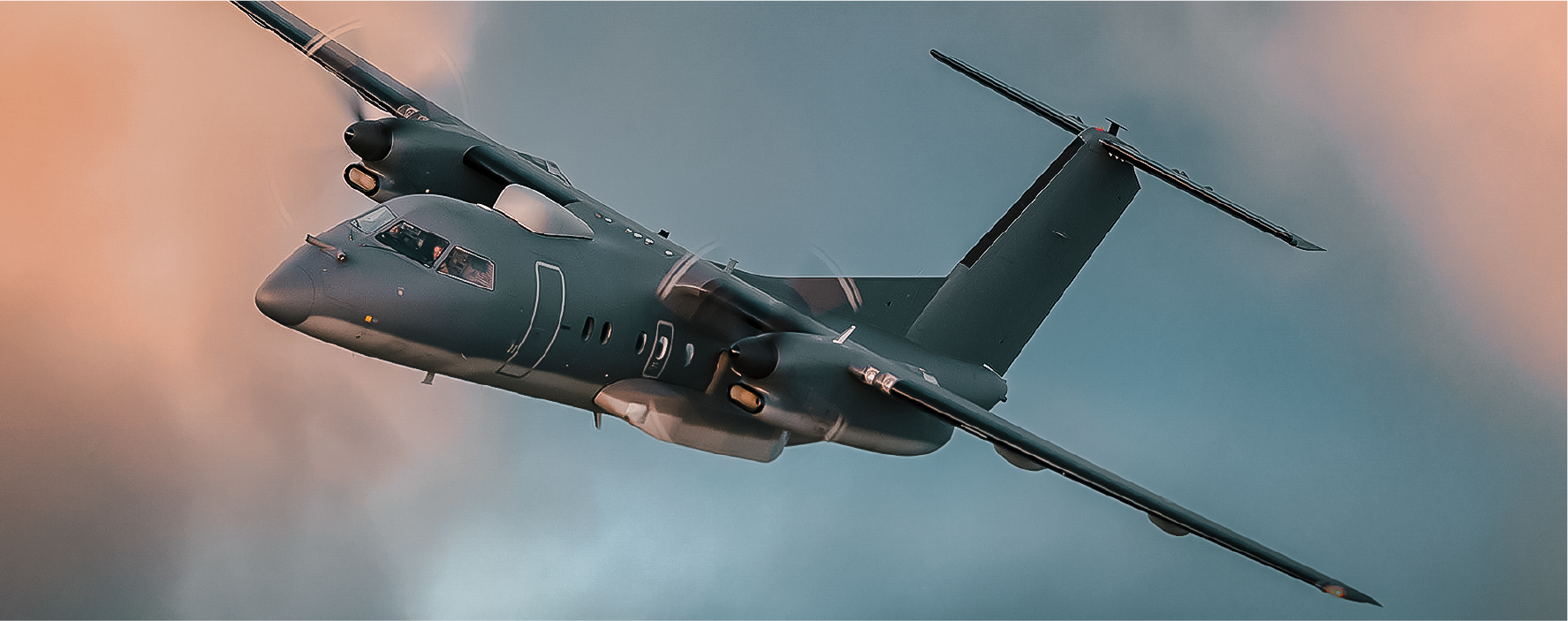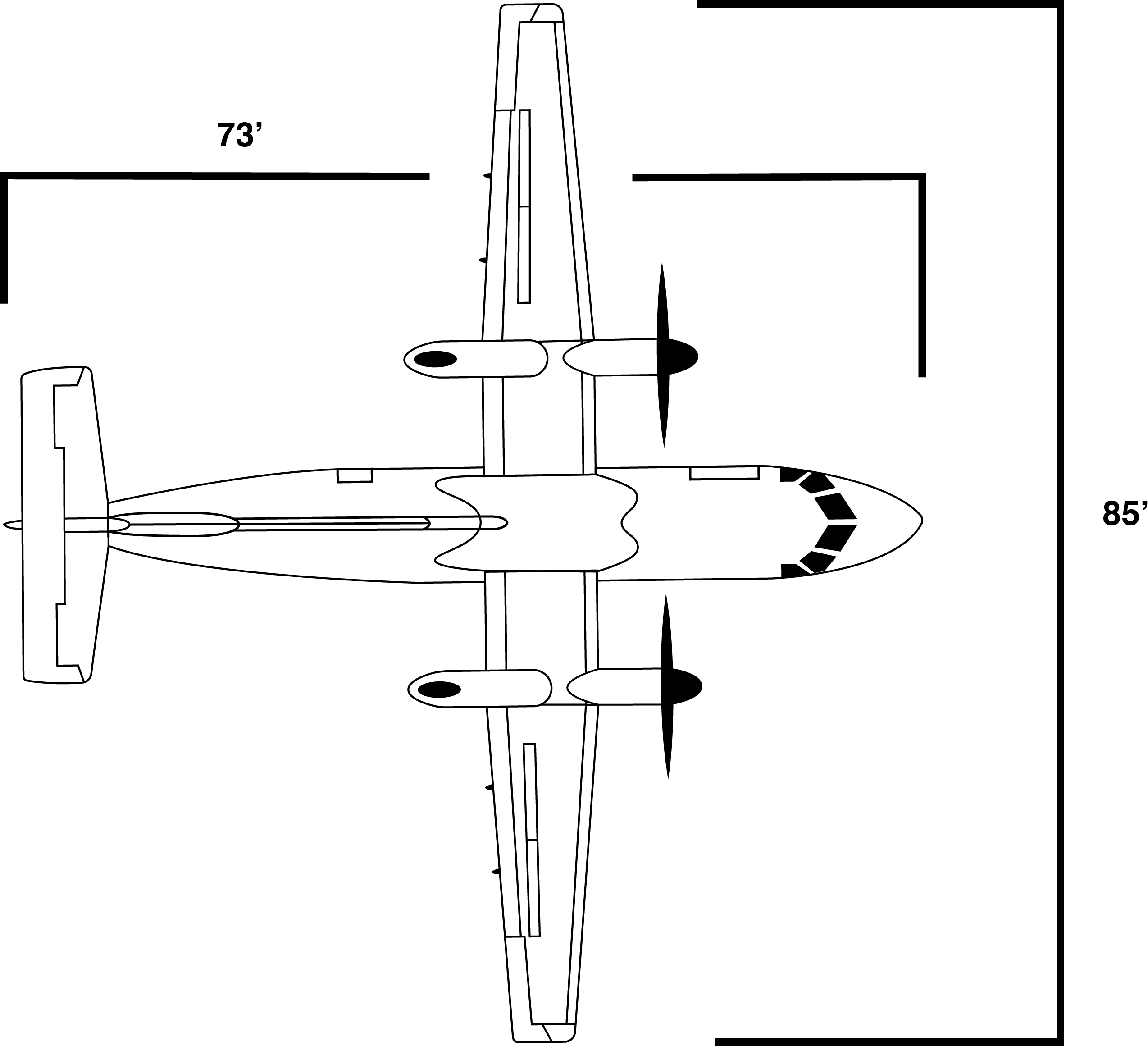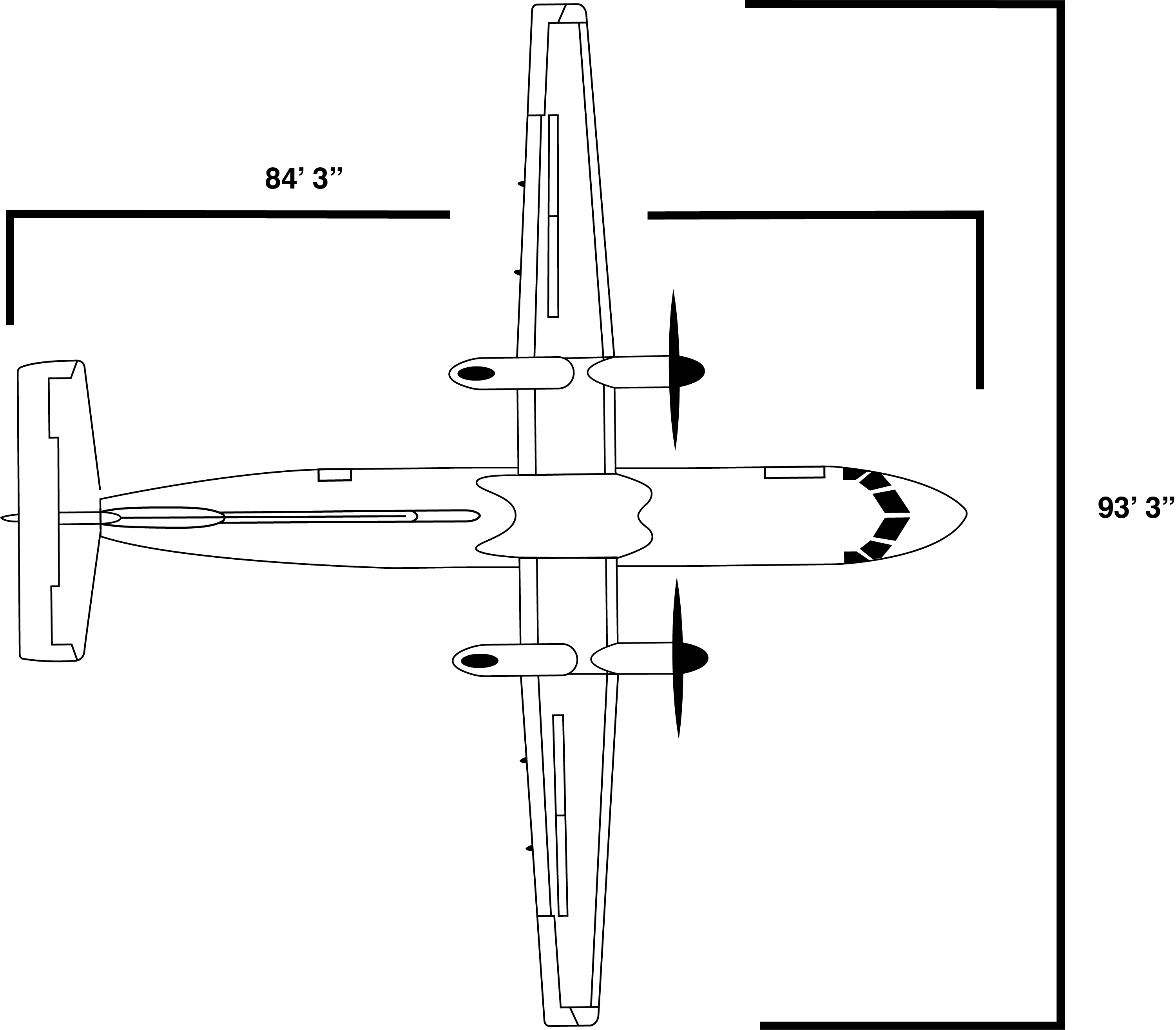
DeHavilland DCH-8
The DeHavilland DHC-8, also known as the Dash 8, is a versatile and reliable family of turboprop aircraft. Developed by DeHavilland Canada, this aircraft series has gained a reputation for its efficiency, short takeoff and landing capabilities, and robust performance in regional and short-haul operations.
The DHC-8 features a spacious cabin with a seating capacity that can vary depending on the specific variant and configuration. These aircraft are designed to provide comfort to passengers, offering generous legroom, large windows for scenic views, and a relatively quiet cabin environment.
Powered by Pratt & Whitney Canada turboprop engines, the Dash 8 series is known for its excellent fuel efficiency and environmental performance. The aircraft’s turboprop engines offer a good balance between power and efficiency, making them suitable for operations in various weather conditions and on shorter runways.
The DHC-8 is highly maneuverable, capable of operating in and out of airports with challenging terrain or limited infrastructure. Its short takeoff and landing capabilities allow for efficient operations, even in airports with shorter runways or in remote areas.
The Dash 8 family includes various variants, such as the Q100, Q200, Q300, and Q400, each with different seating capacities and ranges. These aircraft have found applications in regional airlines, commuter operations, cargo transportation, and special mission roles, showcasing their versatility and adaptability to different operational requirements.
With a strong track record and a focus on reliability, the DeHavilland DHC-8 remains a popular choice for regional and short-haul operations, providing airlines and operators with dependable and efficient transportation solutions.
The Dash 8 series is considered the platform of choice for tactical Defense missions. Extremely capable at both high and low altitudes and in austere locations, the Dash 8 series of aircraft has the right combination of range, reliability, robust performance, and payload for challenging missions around the globe. Dynamic Aviation has also pioneered the use of sidecars on Dash 8s. The modular design of these units allows sensors to be easily swapped out for different mission requirements.
Q100
The Q100 was the initial variant of the Dash 8 series. It features a relatively smaller size and lower seating capacity compared to the subsequent models. The Q100 is known for its efficiency, short takeoff and landing capabilities, and versatility in regional and short-haul operations.

Specifications
- Crew: 2 (pilot and co-pilot)
- Length: 22.25 meters (73 feet)
- Wingspan: 25.91 meters (85 feet)
- Height: 7.49 meters (24 feet 7 inches)
- Maximum Takeoff Weight: 19,500 kilograms (42,990 pounds)
- Maximum Range: Approximately 1,080 kilometers (583 nautical miles)
- Maximum Cruise Speed: Approximately 490 kilometers per hour (267 knots or 305 miles per hour)
- Engines: Powered by 2 Pratt & Whitney Canada PW120 series turboprop engines
- Engine Power: Approximately 1,800 shaft horsepower per engine
- Fuel Capacity: Approximately 3,192 liters (844 US gallons)
- Service Ceiling: Approximately 7,620 meters (25,000 feet)
- Runway Requirements: Varies depending on factors such as weight, temperature, and elevation, but typically around 1,370 meters (4,500 feet) for takeoff and 1,060 meters (3,500 feet) for landing.
Q200
The Q200 is a stretched version of the Q100, offering increased seating capacity while maintaining similar performance characteristics. It provides additional seating capacity without sacrificing the efficiency and versatility of the Dash 8 series.

Specifications
- Crew: 2 (pilot and co-pilot)
- Length: 25.68 meters (84 feet 3 inches)
- Wingspan: 25.91 meters (85 feet)
- Height: 7.49 meters (24 feet 7 inches)
- Maximum Takeoff Weight: 19,500 kilograms (42,990 pounds)
- Maximum Range: Approximately 1,417 kilometers (764 nautical miles)
- Maximum Cruise Speed: Approximately 486 kilometers per hour (262 knots or 302 miles per hour)
- Engines: Powered by 2 Pratt & Whitney Canada PW123 turboprop engines
- Engine Power: Approximately 2,150 shaft horsepower per engine
- Fuel Capacity: Approximately 3,192 liters (844 US gallons)
- Service Ceiling: Approximately 7,620 meters (25,000 feet)
- Runway Requirements: Varies depending on factors such as weight, temperature, and elevation, but typically around 1,470 meters (4,820 feet) for takeoff and 1,090 meters (3,580 feet) for landing.
Q300
The Q300 is another stretched variant, providing increased seating capacity compared to both the Q100 and Q200. It offers enhanced performance and greater range capabilities, making it suitable for regional and short-haul operations with a slightly higher passenger demand.

Specifications
- Crew: 2 (pilot and co-pilot)
- Length: 25.68 meters (84 feet 3 inches)
- Wingspan: 28.42 meters (93 feet 3 inches)
- Height: 7.49 meters (24 feet 7 inches)
- Maximum Takeoff Weight: 22,500 kilograms (49,604 pounds)
- Maximum Range: Approximately 2,280 kilometers (1,230 nautical miles)
- Maximum Cruise Speed: Approximately 505 kilometers per hour (273 knots or 314 miles per hour)
- Engines: Powered by 2 Pratt & Whitney Canada PW123 or PW123B turboprop engines
- Engine Power: Approximately 2,180 to 2,380 shaft horsepower per engine (PW123), or 2,500 shaft horsepower per engine (PW123B)
- Fuel Capacity: Approximately 4,365 liters (1,153 US gallons)
- Service Ceiling: Approximately 7,620 meters (25,000 feet)
- Runway Requirements: Varies depending on factors such as weight, temperature, and elevation, but typically around 1,470 meters (4,820 feet) for takeoff and 1,070 meters (3,510 feet) for landing.
